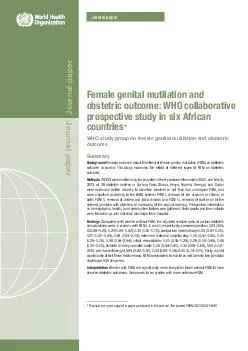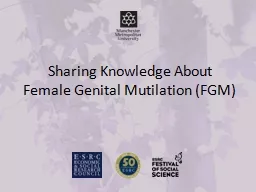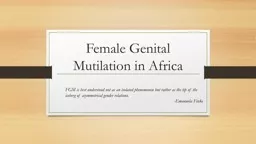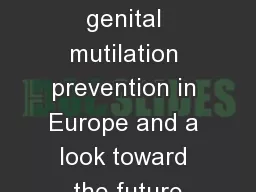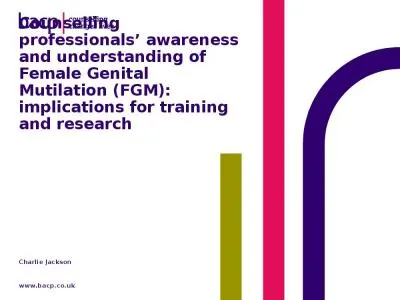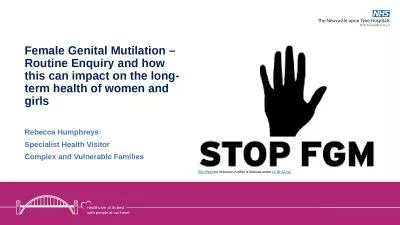PPT-Virtual Case Female Genital Mutilation
Author : AngelEyes | Published Date : 2022-08-03
June 2017 FGM Scenario You are in theatre providing anaesthesia for a 16yearold girl of East African origin who is undergoing an emergency laparotomy for suspected
Presentation Embed Code
Download Presentation
Download Presentation The PPT/PDF document "Virtual Case Female Genital Mutilation" is the property of its rightful owner. Permission is granted to download and print the materials on this website for personal, non-commercial use only, and to display it on your personal computer provided you do not modify the materials and that you retain all copyright notices contained in the materials. By downloading content from our website, you accept the terms of this agreement.
Virtual Case Female Genital Mutilation: Transcript
Download Rules Of Document
"Virtual Case Female Genital Mutilation"The content belongs to its owner. You may download and print it for personal use, without modification, and keep all copyright notices. By downloading, you agree to these terms.
Related Documents


